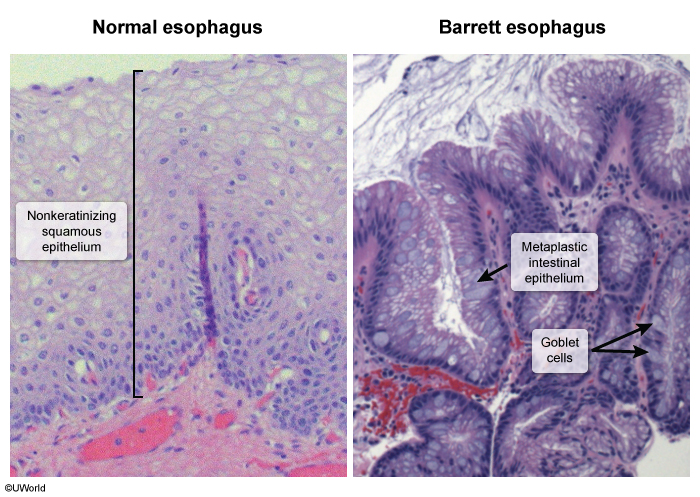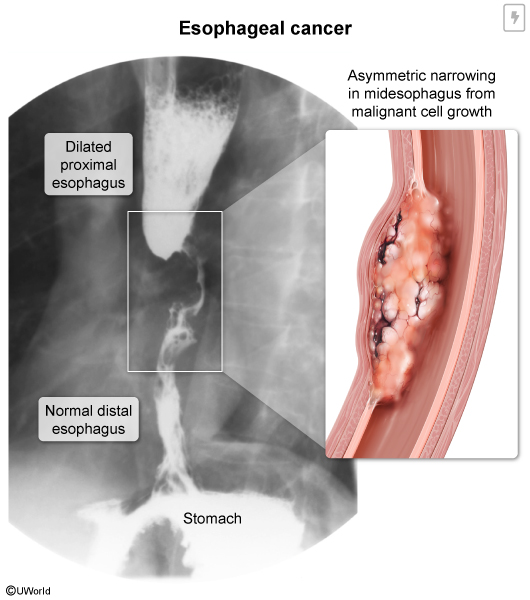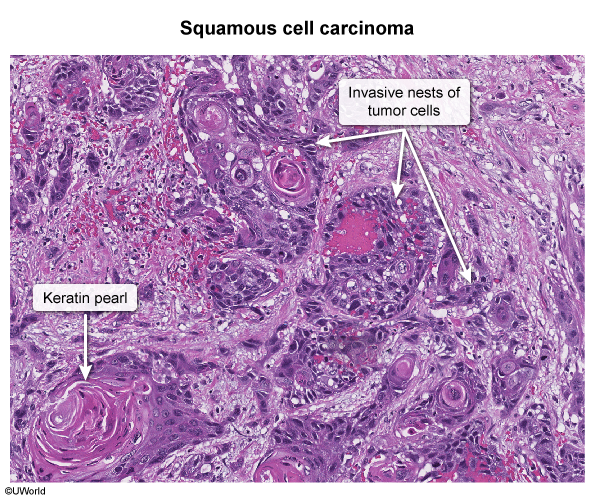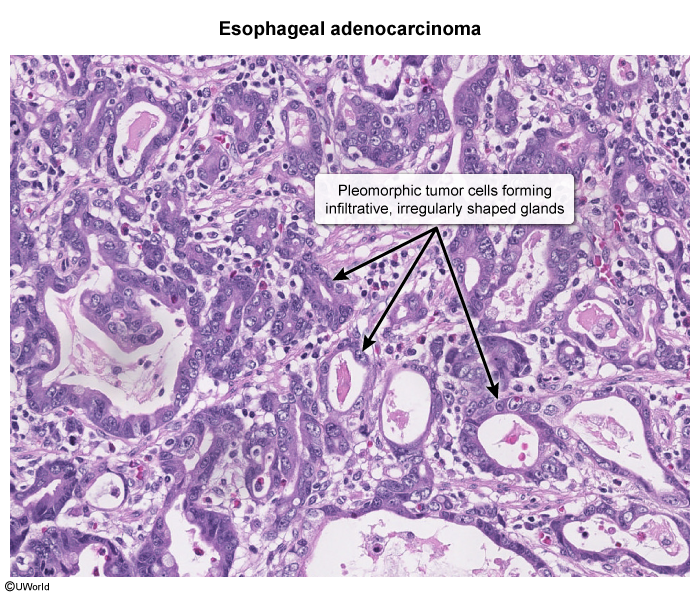Esophageal Cancer
Article Sections
Introduction
Esophageal cancer is a malignant neoplasm arising from the epithelial lining of the esophagus. Although less common than many other gastrointestinal malignancies, it often presents at advanced stages and carries a poor prognosis. Globally, squamous cell carcinoma (SCC) remains the main histologic subtype, especially in Asia and Africa, whereas adenocarcinoma predominates in countries in the Western hemisphere. These differences reflect varying risk factors: In adenocarcinoma-predominant regions, obesity, gastroesophageal reflux disease (GERD), and dietary habits play a role, whereas tobacco, alcohol, and hot beverages predominate in SCC-predominant regions.
Pathophysiology and risk factors
Esophageal cancer develops through a progression from normal epithelium to dysplasia and, ultimately, invasive malignancy. The main subtypes—SCC and adenocarcinoma—arise via distinct pathways, tend to occur in different regions of the esophagus, and have unique risk factors (
Continue Learning with UWorld
Get the full Esophageal Cancer article plus rich visuals, real-world cases, and in-depth insights from medical experts, all available through the UWorld Medical Library.
Images



